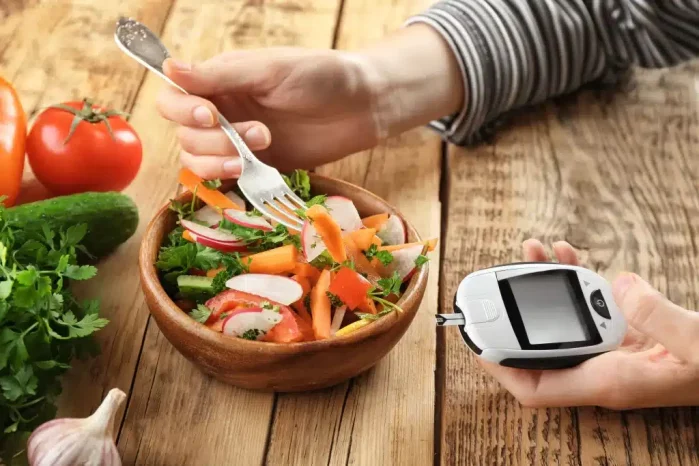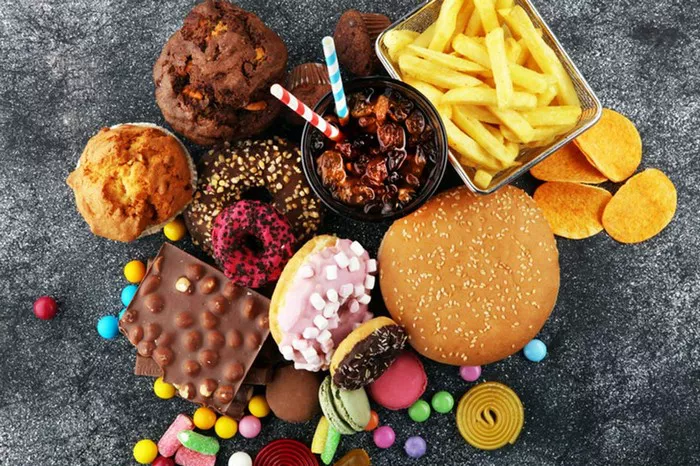Diabetes mellitus, a chronic condition characterized by elevated blood glucose levels, affects millions worldwide. Effective management of high blood sugar (hyperglycemia) is crucial to prevent complications such as cardiovascular disease, neuropathy, and retinopathy. Among the various strategies to control blood sugar, diet plays a pivotal role. This article explores the foods and dietary patterns that can help lower high blood sugar, providing a comprehensive guide for those seeking to manage their diabetes through nutrition.
Understanding High Blood Sugar
What is Hyperglycemia?
Hyperglycemia occurs when blood sugar levels rise above normal, which can happen in both Type 1 and Type 2 diabetes. For most people with diabetes, blood sugar levels above 180 mg/dL after meals or above 130 mg/dL after fasting are considered high. Chronic hyperglycemia can lead to serious health complications, emphasizing the importance of timely intervention and management.
Causes of High Blood Sugar
Several factors can cause high blood sugar, including:
- Inadequate insulin production or usage: In Type 1 diabetes, the pancreas produces little or no insulin, while in Type 2 diabetes, the body becomes resistant to insulin.
- Dietary choices: Consuming high amounts of refined carbohydrates and sugars can spike blood glucose levels.
- Physical inactivity: Lack of exercise can lead to insulin resistance.
- Stress: Physical or emotional stress can increase blood sugar levels.
- Illness: Certain illnesses can cause temporary spikes in blood sugar.
The Role of Diet in Managing Blood Sugar
Glycemic Index and Glycemic Load
Understanding the glycemic index (GI) and glycemic load (GL) of foods can aid in making better dietary choices. The GI measures how quickly a carbohydrate-containing food raises blood sugar levels, while the GL takes into account both the GI and the carbohydrate content in a serving.
- Low-GI Foods: Foods with a GI of 55 or less are considered low-GI. These foods are digested and absorbed more slowly, leading to gradual increases in blood sugar.
- High-GI Foods: Foods with a GI of 70 or more cause rapid spikes in blood sugar.
Foods That Help Lower High Blood Sugar
Non-Starchy Vegetables
Non-starchy vegetables are low in carbohydrates and high in fiber, making them excellent choices for blood sugar control.
- Examples: Broccoli, spinach, kale, cauliflower, bell peppers, cucumbers.
- Benefits: These vegetables have a minimal impact on blood sugar levels and are rich in vitamins, minerals, and antioxidants.
Whole Grains
Whole grains have a lower glycemic index compared to refined grains and are high in fiber, which helps in maintaining stable blood sugar levels.
- Examples: Oats, quinoa, barley, brown rice, whole wheat.
- Benefits: The fiber in whole grains slows down digestion and glucose absorption, preventing blood sugar spikes.
Legumes
Legumes such as beans, lentils, and chickpeas are high in protein and fiber, making them excellent for blood sugar management.
- Examples: Black beans, lentils, chickpeas, kidney beans.
- Benefits: They provide a slow and steady release of glucose into the bloodstream, helping to keep blood sugar levels stable.
Fruits
While fruits contain natural sugars, many have a low GI and are high in fiber, vitamins, and antioxidants.
- Examples: Berries (strawberries, blueberries, raspberries), apples, pears, cherries.
- Benefits: These fruits have a low glycemic impact and provide essential nutrients that support overall health.
Nuts and Seeds
Nuts and seeds are low in carbohydrates and high in healthy fats, protein, and fiber.
- Examples: Almonds, walnuts, chia seeds, flaxseeds.
- Benefits: They help in moderating blood sugar levels and improve insulin sensitivity.
Healthy Fats
Incorporating healthy fats can improve blood sugar control and reduce the risk of cardiovascular disease.
- Examples: Avocados, olive oil, fatty fish (salmon, mackerel), nuts, seeds.
- Benefits: Healthy fats do not raise blood sugar levels and can improve satiety and insulin sensitivity.
Dietary Patterns for Blood Sugar Management
Mediterranean Diet
The Mediterranean diet is rich in fruits, vegetables, whole grains, nuts, seeds, and healthy fats, particularly olive oil.
- Benefits: This dietary pattern has been shown to improve blood sugar control and reduce the risk of diabetes-related complications.
DASH Diet
The Dietary Approaches to Stop Hypertension (DASH) diet emphasizes fruits, vegetables, whole grains, and lean proteins while limiting sugar and saturated fat.
- Benefits: Originally designed to lower blood pressure, the DASH diet is also effective in managing blood sugar levels.
Plant-Based Diets
Plant-based diets focus on whole, minimally processed plant foods and limit or eliminate animal products.
- Benefits: These diets are high in fiber and low in unhealthy fats, contributing to better blood sugar control and reduced insulin resistance.
Practical Tips for Managing Blood Sugar Through Diet
Portion Control
Eating appropriate portion sizes can prevent overeating and help maintain stable blood sugar levels.
- Strategy: Use smaller plates, measure servings, and be mindful of portion sizes, especially for high-carbohydrate foods.
Balanced Meals
Ensure each meal contains a balance of carbohydrates, protein, and healthy fats to stabilize blood sugar levels.
- Strategy: Incorporate a source of protein (e.g., lean meat, legumes), healthy fat (e.g., olive oil, nuts), and low-GI carbohydrates (e.g., vegetables, whole grains) in each meal.
Regular Meal Timing
Consistent meal timing helps maintain steady blood sugar levels throughout the day.
- Strategy: Aim to eat at regular intervals, such as three main meals and two to three small snacks, to avoid large fluctuations in blood sugar.
Hydration
Staying hydrated is important for overall health and can aid in blood sugar management.
- Strategy: Drink plenty of water and limit sugary drinks and alcohol, which can spike blood sugar levels.
Mindful Eating
Practicing mindful eating can help you make healthier food choices and avoid overeating.
- Strategy: Pay attention to hunger and fullness cues, eat slowly, and savor each bite.
Specific Foods to Include and Avoid
Include:
- Leafy Greens: Spinach, kale, Swiss chard.
- Berries: Blueberries, strawberries, raspberries.
- Whole Grains: Quinoa, barley, oats.
- Healthy Fats: Olive oil, avocados, nuts, seeds.
- Legumes: Lentils, black beans, chickpeas.
- Lean Proteins: Fish, poultry, tofu, tempeh.
- Low-GI Fruits: Apples, pears, cherries.
Avoid:
- Sugary Drinks: Sodas, sweetened teas, fruit juices.
- Refined Carbohydrates: White bread, pastries, white rice.
- Processed Snacks: Chips, cookies, candy.
- High-GI Foods: Potatoes, white bread, rice cakes.
- Trans Fats: Found in many fried and processed foods.
The Role of Fiber in Blood Sugar Management
Types of Fiber
There are two main types of dietary fiber: soluble and insoluble.
- Soluble Fiber: Dissolves in water to form a gel-like substance, slowing down digestion and glucose absorption.
- Sources: Oats, legumes, fruits (apples, berries), vegetables (carrots, broccoli).
- Insoluble Fiber: Adds bulk to the stool and aids in digestion.
- Sources: Whole grains, nuts, seeds, vegetables (cauliflower, green beans).
Benefits of Fiber
High-fiber diets are associated with better blood sugar control, reduced cholesterol levels, and improved digestive health. Fiber slows the absorption of sugar, leading to more gradual increases in blood sugar levels.
Incorporating Superfoods into Your Diet
Chia Seeds
Chia seeds are rich in fiber, omega-3 fatty acids, and antioxidants.
- Benefits: They can help stabilize blood sugar levels and improve heart health.
Cinnamon
Cinnamon has been shown to improve insulin sensitivity and lower blood sugar levels.
- Benefits: Adding cinnamon to your diet may help control blood sugar spikes.
Turmeric
Turmeric contains curcumin, which has anti-inflammatory and blood sugar-lowering properties.
- Benefits: Incorporating turmeric into meals can support overall health and blood sugar management.
Apple Cider Vinegar
Apple cider vinegar may improve insulin sensitivity and lower blood sugar levels after meals.
- Benefits: Consuming a small amount before meals can help reduce postprandial blood sugar spikes.
The Importance of Regular Physical Activity
Exercise and Blood Sugar
Physical activity helps the body use insulin more efficiently, leading to better blood sugar control.
- Types of Exercise: Aerobic exercises (walking, swimming, cycling) and strength training (weight lifting, resistance exercises) are beneficial.
- Recommendations: Aim for at least 150 minutes of moderate-intensity exercise per week, along with muscle-strengthening activities on two or more days per week.
Combining Diet and Exercise
A combination of a healthy diet and regular exercise can significantly improve blood sugar control and overall health.
- Strategy: Pair meals with physical activity, such as a walk after dinner, to help manage blood sugar levels.
Monitoring and Adjusting Your Diet
Regular Blood Sugar Testing
Monitoring blood sugar levels can help you understand how different foods and activities affect your blood sugar.
Related topics:
How does Diet Affect Type 2 Diabetes?
How does Diet Affect Blood Glucose Levels?
What is the Best Diet Plan for Insulin Resistance People?
























